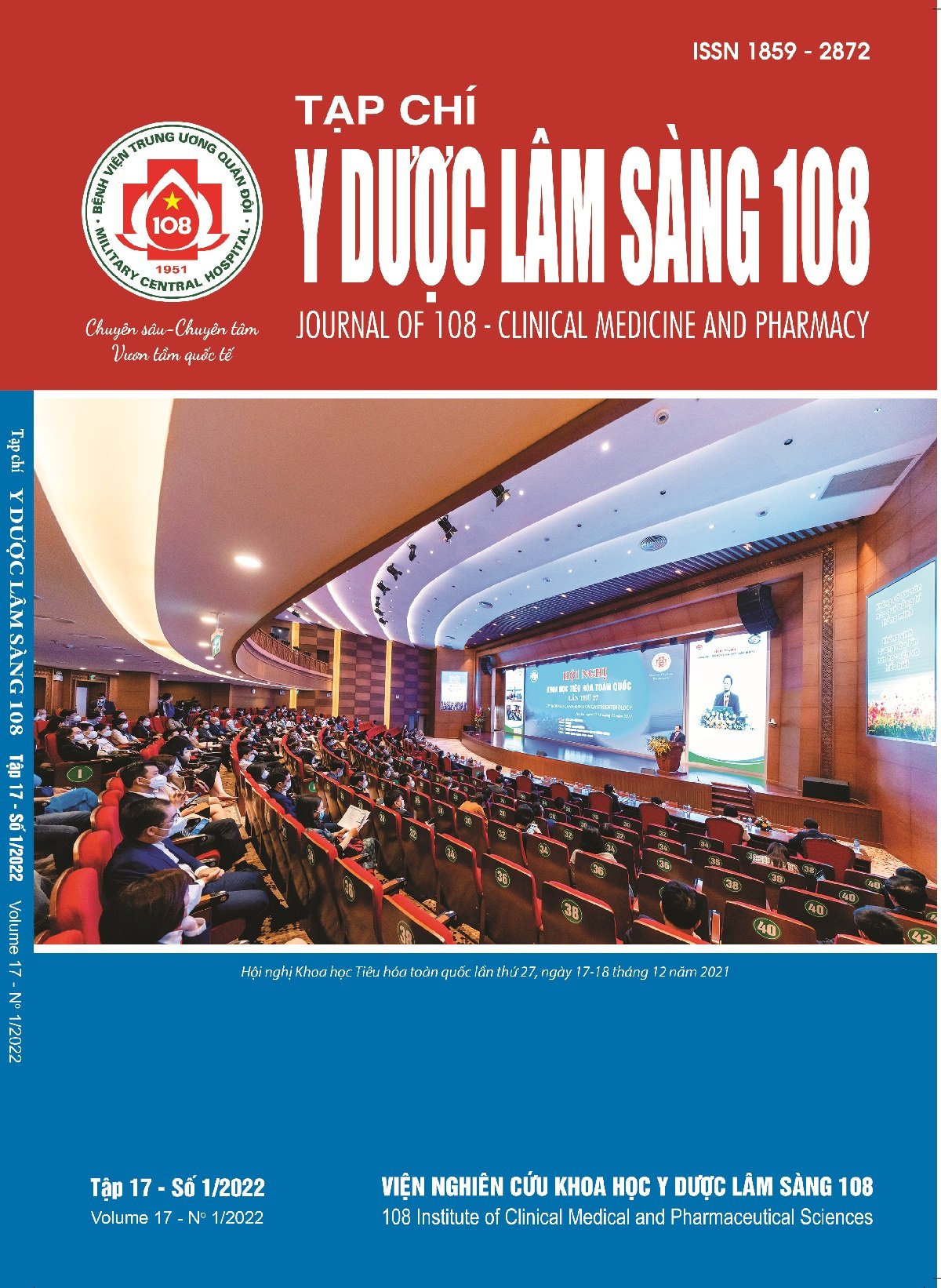Association of IL36RN and CARD14 mutations with some clinical manifestations in patients with pustular psoriasis in Vietnam
Main Article Content
Keywords
Abstract
Objective: To investigate the association of the IL36RN and CARD14 mutations with some clinical features of patients with pustular psoriasis. Subject and method: A descriptive cross-sectional study included 64 patients with pustular psoriasis at Ho Chi Minh City (HCMC) Dermatology Hospital and Hanoi Central Institute of Dermatology. The patients' history and clinical examination were collected. Blood samples (2ml) were taken for sequencing to identify mutations in the IL36RN and CARD14 genes at the Center for Molecular Biomedicine, University of Medicine and Pharmacy at HCMC. Result: The c.115+6T>C variant (IL36RN) was associated with pustular psoriasis alone. The rate of history of psoriasis vulgaris in the CARD14 alone group was higher than the IL36RN alone and the IL36RN + CARD14 group. Two variants c.115+6T>C and c.227C>T (IL36RN) were associated with fever ≥ 38.5oC. c.115+6T>C was associated with geographic tongue. Conclusion: Mutation of IL36RN were associated with some clinical symptoms of pustular psoriasis: History of psoriasis vulgaris, fever ≥ 38.5oC, geographic tongue.
Article Details
References
2. Hussain S, Berki DM, Choon SE et al (2015) IL36RN mutations define a severe autoinflammatory phenotype of generalized pustular psoriasis. Journal of Allergy and Clinical Immunology 135(4): 1067-1070.
3. Jin H, Cho HH, Kim WJ et al (2015) Clinical features and course of generalized pustular psoriasis in Korea. The Journal of dermatology 42(7): 674-678.
4. Li X, Chen M, Fu X et al (2014) Mutation analysis of the IL36RN gene in Chinese patients with generalized pustular psoriasis with/without psoriasis vulgaris. J Dermatol Sci 76(2): 132-138.
5. Li Z, Yang Q, Wang S (2018) Genetic polymorphism of IL36RN in Han patients with generalized pustular psoriasis in Sichuan region of China: A casecontrol study. Medicine 97(31).
6. Liang J, Huang P, Li H et al (2017) Mutations in IL36RN are associated with geographic tongue. Human genetics 136(2): 241-252.
7. Navarini AA, Burden AD, Capon F et al (2017) European consensus statement on phenotypes of pustular psoriasis. J Eur Acad Dermatol Venereol 31(11): 1792-1799.
8. Sugiura K (2014) The genetic background of generalized pustular psoriasis: IL36RN mutations and CARD14 gain-of-function variants. Journal of dermatological science 74(3): 187-192.
9. Sugiura K, Muto M, Akiyama M (2014) CARD14 c.526G>C (p.Asp176His) is a significant risk factor for generalized pustular psoriasis with psoriasis vulgaris in the Japanese cohort. J Invest Dermatol 134(6): 1755-1757.
10. Sugiura K, Takemoto A, Yamaguchi M et al (2013) The majority of generalized pustular psoriasis without psoriasis vulgaris is caused by deficiency of interleukin-36 receptor antagonist. Journal of Investigative Dermatology 133(11): 2514-2521.
11. Tauber M, Bal E, Pei XY et al (2016) IL36RN Mutations affect protein expression and function: A basis for genotype-phenotype correlation in pustular diseases. J Invest Dermatol 136(9): 1811-1819.
12. Zhu T, Jin H, Shu D et al (2018) Association of IL36RN mutations with clinical features, therapeutic response to acitretin, and frequency of recurrence in patients with generalized pustular psoriasis. Eur J Dermatol 28(2): 217-224.
 ISSN: 1859 - 2872
ISSN: 1859 - 2872
